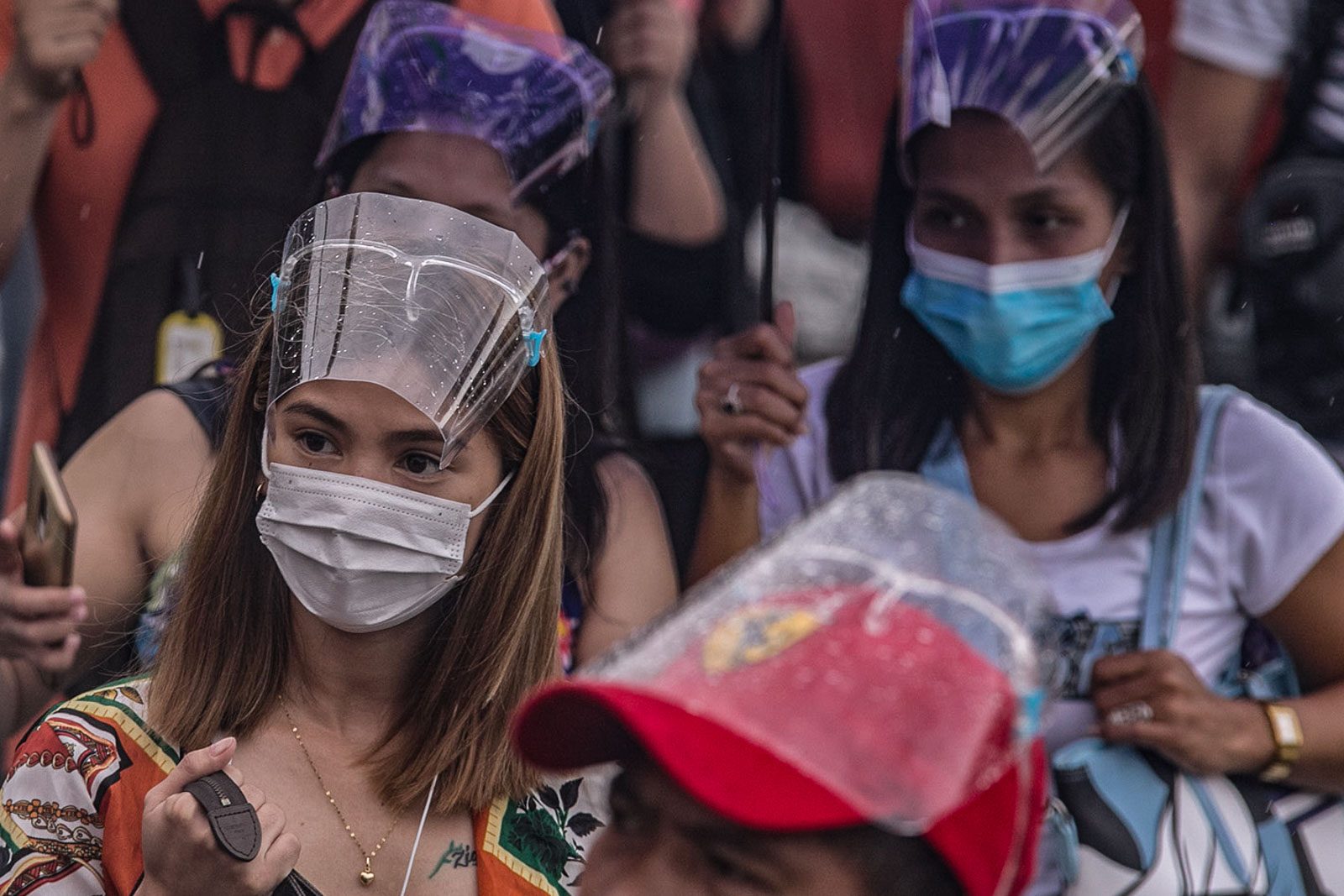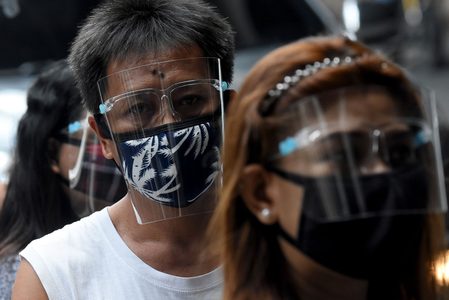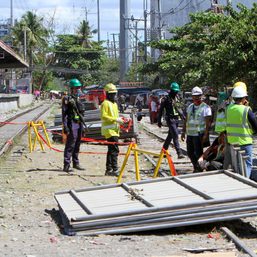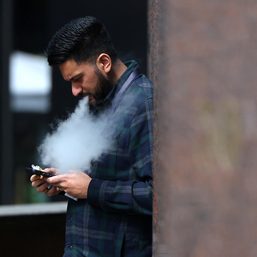SUMMARY
This is AI generated summarization, which may have errors. For context, always refer to the full article.

“Is it necessary?”
“It’s [about] time to discard face shields!”
“It should be optional, not mandatory.”
After half a year of being required to wear face shields, in addition to face masks, when outside their homes, many Filipinos are asking the government to rethink the policy. It can be suffocating. It can cause accidents. Is its use scientific?
The Department of Health (DOH), while saying it’s listening to people’s concerns, also maintains that wearing both a mask and a face shield, coupled with observing physical distancing, can prevent COVID-19 transmission by as much as 90%.
“We understand the concerns raised on the government’s policy on wearing of face shields and we are open to dialogues in improving our health policies. However, the nationwide case trend is plateauing and not decreasing,” Health Undersecretary Maria Rosario Vergeire said.
She said the government can consider loosening up health protocols once there is a significant decline in cases and a large portion of the population have been fully vaccinated.
A face shield is a film made from plastic or other transparent material and is designed to be worn like a visor.
The national government first imposed the face shield requirement in December 2020, in addition to wearing face masks in public.
While a survey released in February 2021 showed that nearly all Filipinos are compliant with the policy of wearing face masks, only around six in 10 individuals adhere to the face shield requirement.
Despite this mandatory wearing face shields and face masks, the Philippines still experienced a surge in COVID-19 infections earlier in 2021. On April 2, the daily count of new COVID-19 cases in the country peaked at 15,310.
Lawmakers have also called for a review of the face shield requirement, saying it’s “anti-poor.” Some of them say the Philippines is the only country that requires it.
So, is wearing face shield necessary to protect an individual from COVID-19?
WHO, CDC don’t require face shields
According to the World Health Organization (WHO), face shields are designed to “provide protection from splashes of biological fluid,” and that, in the context of COVID-19, face shields are used by healthcare workers in hospitals, together with other personal protective equipment, as they treat patients.
The WHO added that “current laboratory testing standards only assess face shields for their ability to provide eye protection from chemical splashes.” COVID-19 is primarily transmitted through respiratory droplets.
However, the WHO specifies that face shields can be used as an eye protection against respiratory droplets, in conjunction with face masks, specifically medical masks.
Meanwhile, the United States Centers for Disease Control and Prevention (CDC) says face shields are “not as effective at protecting you or the people around you from respiratory droplets.” It adds that face shields cannot be used as substitute for face masks.
Both the WHO and the CDC do not have recommendations on making wearing face shields a policy.
Virus can still enter
Meanwhile, a study published in the journal Physics of Fluids found that, even though face shields stopped the initial entry of droplets, much smaller droplets lingered at the bottom of the shield and floated around at the sides.
Scientists simulated coughing by connecting the head of a mannequin to a fog machine, and then using a pump to expel the vapor through the mannequin’s mouth.
“The visualizations indicate that, although face shields block the initial forward motion of the jet, the expelled droplets can move around the visor with relative ease and spread out over a large area depending on light ambient disturbances,” the report said.
In an interview with Rappler on Thursday, June 10, former national COVID-19 task force adviser Dr. Tony Leachon said it was “counterintuitive to relax our protective gear without herd immunity.”
“We are in a new surge right now not only in NCR (National Capital Region) but in other regions of the country – in fact, Davao City and Western Visayas. We can’t relax now,” he said.
Leachon, a health reform advocate, echoed the DOH’s position on the use of face shields, saying that “there’s absolutely science to prove that face shields can be beneficial as an extra layer of protection.”
Meanwhile, the public clamor for a policy review intensifies. At the very least, they are asking the government to make a clear – and firm – recommendation for or against the use of face shields. – Rappler.com
Add a comment
How does this make you feel?


![[Free to Disagree] Sabwatan ng mga doktor at drug companies](https://www.rappler.com/tachyon/2024/04/tl-sabwatan-doktor-drug-companies-April-22-2024.jpg?resize=257%2C257&crop=292px%2C0px%2C720px%2C720px)



There are no comments yet. Add your comment to start the conversation.